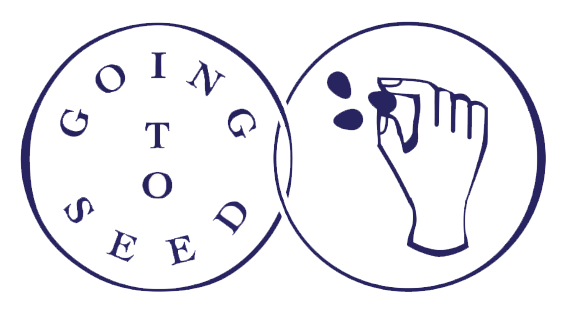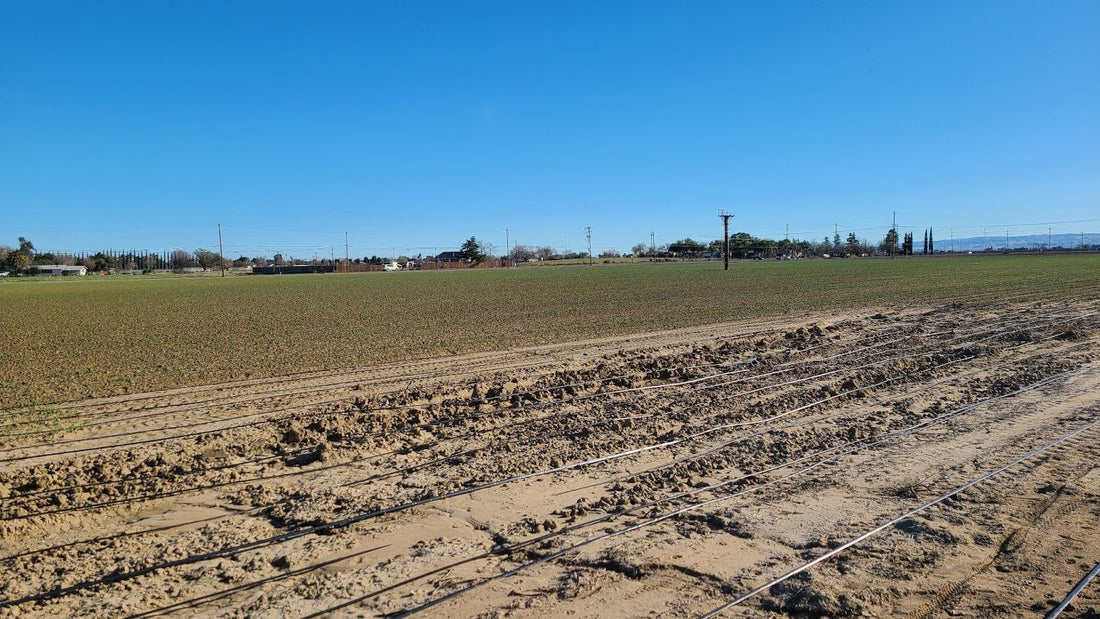By Lowell McCampbell
Above Photo: A field of garlic sprouting in January in California
When I have worked on farms or spent time around areas with large-scale agriculture, I am often dismayed at how crops displace the natural landscape and animals that lived there. I think we are all familiar with the image of monocropped fields, whether it is corn, cabbage, or something else, in which there is a sea of a single crop without intercrop diversity or a weed in sight. With all the intensive tillage, herbicides, plastics, or other mechanisms to create a desolate landscape, these spaces allow for a very narrow set of life, that of the crop and perhaps bacteria. These fields are, in essence, dead. In contrast, farming in polyculture goes beyond plant diversity. It contributes to the greater life thread of animals that can live in and around the farmed area.
 An American Painted Lady is enticed by the sweet perfume and beauty of an onion in bloom.
An American Painted Lady is enticed by the sweet perfume and beauty of an onion in bloom.
In my field in North Florida, I planted mimosa trees to use their leaves as fertilizer and to provide partial shade. In what is open land with little cover, these trees have become a haven for lizards and frogs during transitional periods when the field is mostly empty of growing plants. This is between spring and summer, when fall and winter crops have been harvested, and in autumn, when summer crops have been harvested. These times of the year are when I am most active in the garden, either harvesting or planting, and have the most impact on altering the landscape. Unexpectedly, I have seen two types of ants take advantage of these trees, a tiny black ant about two millimeters long and a larger orange ant about a centimeter long. I also have seen leaf hoppers in the upper boughs of the mimosa trees, which I suspect the large orange ant is milking for sugar. The act of planting a tree, even one such as mimosa, which is considered invasive here, has effects that extend beyond my intentions. It has the potential to sustain a myriad of different animals that use its limbs like a highway, algae and lichens that spread out on its bark’s surface, and it becomes a beautiful tree to behold.
Some animals prefer some plants in the garden over others. I notice that corn and sorghum are beloved by frogs because the leaves funnel dew and rain to the center stalk and provide a sort of cup with water for the frogs to stay moist in as they hide and sleep during the day. The leaves are also shades of bright or dark green, which camouflage well with the frogs’ green skin. At night, the frogs eat many insects and leave behind dark pellets to fertilize the corn leaves in the next rain.
 Tree frogs enjoying the protection of GTS sweet corn leaves as they rest and sleep.
Tree frogs enjoying the protection of GTS sweet corn leaves as they rest and sleep.
Aphids are one of the simplest and most abundant mediators between inedible plant matter and sustenance for many insects. Fire ants, as painful as they can be, are great farmers and quickly take advantage of anything sweet. In warm months, they will nurse and tend colonies of aphids in exchange for sugary excrement. Ladybugs, birds, lacewings, syrphid flies, and other animals are known to take advantage of aphid abundance.
Even the stinkbugs, wasps, and insects that we may call pests have some important role in the garden, usually by being food for other animals. A misguided brush against a hidden wasp nest can result in the feeling of fire upon my leg, which might merit their removal, but these insects are voracious eaters of caterpillars and are worth keeping around. Thankfully, I’m not allergic to them.
 Fire ants farm sugar from aphids on a corn plant.
Fire ants farm sugar from aphids on a corn plant.
What we do to the land matters. I believe all land is stewarded under this premise, either knowingly or not. It has ambient and cascading effects, both of which can be seen in the difference between two pieces of land. The land I farm on is slowly transitioning from goldenrod, broomsedge, and various other annual and perennial grasses and flowering plants to forest. There is a flourishing of many plants, insects, and birds that create a heavenly chorus as the world expresses what we call beauty. In contrast, the garlic field in the first photo above creates an ambient environment of quiet and desolation, and cannot support a complex web of life. I believe that by noticing what lives in our garden and farmland, we can know more about the health of the land we depend upon and how to take care of it.
What do you see living among your crops?

